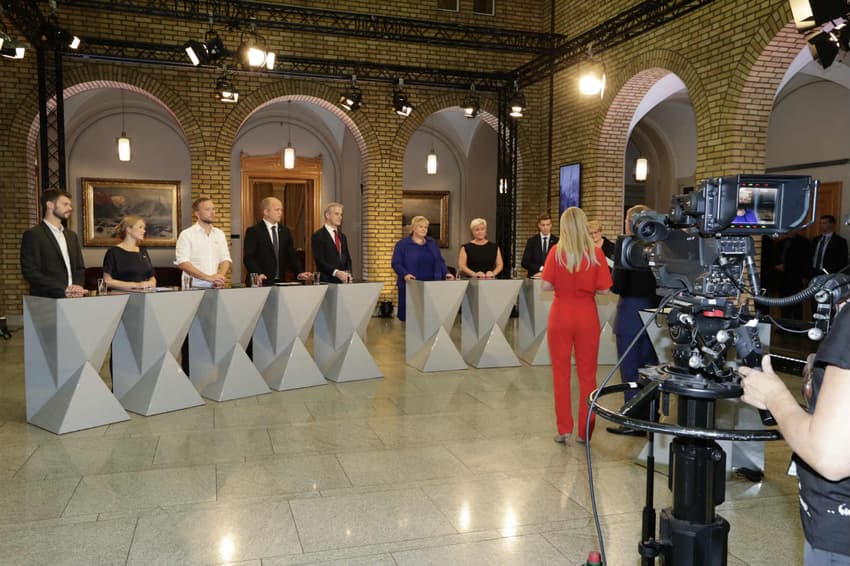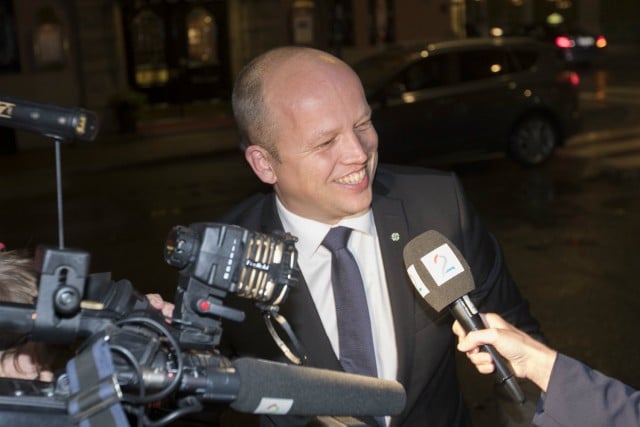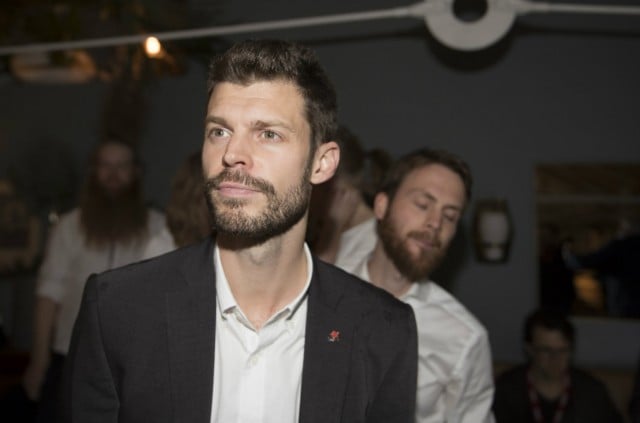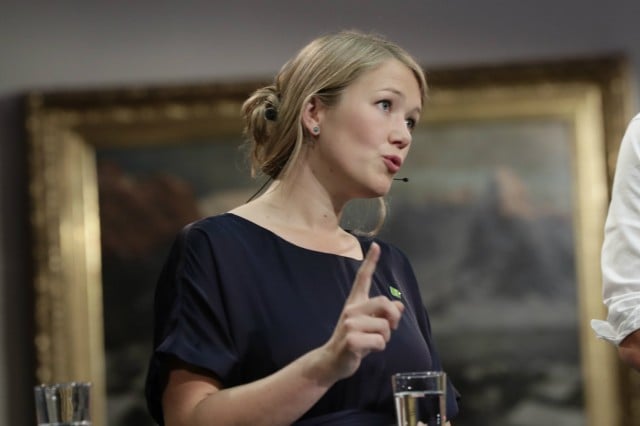Five things to know about Norway’s election outcome

After Norway’s conservative parties won a majority in Monday’s general election, reelected PM Erna Solberg could now face a tricky negotiating task if she is to form an effective government.
Meanwhile, the populist Progress Party saw a loss of support nationally, and more women than ever before now hold seats in parliament.
Here are five essential things to take away from the conservative victory.
READ ALSO: As it happened: Erna Solberg reelected as Norwegian prime minister
1. Conservative allies may refuse to support the Progress Party
The four ‘blue bloc’ parties – Solberg’s Conservatives, the nationalist Progress Party, the Christian Democrats and the Liberals, have 89 seats between them, ten more than the red-green total of 79.
But a continuation of the status quo from the previous election, in which a Conservative-Progress coalition was supported by the two smaller parties, appears in doubt after the Christian Democrats stated that they no longer wish to work with the right-wing, strictly anti-immigration Progress Party.
“We support a centre-right government, so we will see what happens. If that’s not the type of government we get, we’ll go into opposition. But we will not support a blue-blue [Conservative-Progress, ed.] government,” Christian Democrat leader Knut Arild Hareide said during a post-election leaders' debate at the Stortinget parliament on Monday night.
KrF har sagt de ikke vil felle Erna som statsminister uansett, men ikke vil inngå samarbeidsavtale med FrP. FrP+KrF er derfor ikke trolig.
— NRK Nyheter (@nrknyheter) September 12, 2017
Liberal leader Trine Skei Grande is yet to commit her party, while Solberg, who specifically thanked Progress Party leader Siv Jensen in her speech to party supporters Monday night, has invited her fellow leaders to talks on the make-up of the new government.
2. Labour loses votes in all regions
Jonas Gahr Støre’s Labour party was by far the worst performer in the election. The party, traditionally Norway’s largest, just about retained the largest single share of the vote over the Conservatives – but its project 3.4 percent regression to 27.4 percent represents the worst election for the party since 2001.
The party lost votes in every single one of the country’s administrative regions (fylker).
Støre said following the election that he was disappointed, but expected to continue as leader.
“I feel that I am leading a united party. I take responsibility as leader of the Labour Party. Tomorrow the work begins to evaluate this election. I will take responsibility, and that means leading that work,” he told Aftenposten.
In the above video, posted by Filter Nyheter, Labour supporters react to the initial prognosis of a conservative majority.
3. Agrarian centrists the night's biggest winners
The Centre Party is now Norway’s fourth largest, with 10.3 percent of the votes and 18 seats, up from ten prior to the vote.
The anti-EU membership, pro-decentralisation party last performed this strongly at the beginning of the 1990s, when the debate about Norway’s relation to the EU was at its height.
In the rural Sogn og Fjordane region, the party came with at 29.8 percent of the vote, a huge 9.2 point march on 2013, while in the Nordland municipality of Andøy, a local government crisis relating to the closure of an airfield saw Centre gain an astonishing 63.7 points.

Centre Party leader Trygve Slagsvold Vedum. Photo: Terje Bendiksby / NTB scanpix
4. Marxist party picks up votes in Oslo, gains parliamentary seat
The Red Party, a rank outsider founded in 2007 and never before represented in parliament, is projected a 3.1 point gain in Oslo, where Labour, the Conservatives, Progress and the Christian Democrats all lost support.
The Socialist Left and Centre parties did gain ground in the capital, completing an apparent swing to the left in Norway’s biggest population centre.
A party with a declared Marxist-Socialist ideology, the Norwegian Red Party seeks to replace capitalism with democratic socialism, but does not support armed revolution.
With 1.2 percent of the overall vote at the latest count, Red leader Bjørnar Moxnes is likely to enter parliament as a representative for Oslo.
“Tens of thousands voted Red today to take the initiative against Norway’s inequality. It is a breakthrough for Red and really, really great,” Moxnes said according to Aftenposten.

Red Party leader Bjørnar Moxnes. Photo: Terje Pedersen / NTB scanpix
5. Record number of women in parliament
70 women have won parliamentary seats at the latest prognosis, up from 67 in the 2013 parliamentary term, which was also a record at the time of that election, reports NTB.
The 70 seats held by women represent 42 percent of parliament as a whole.

Green Party co-spokesperson Une Aina Bastholm takes over as her party's sole representative in parliament. Photo: Berit Roald / NTB scanpix
READ ALSO: Norway’s red-green parties won popular vote, lost election
Comments
See Also
Meanwhile, the populist Progress Party saw a loss of support nationally, and more women than ever before now hold seats in parliament.
Here are five essential things to take away from the conservative victory.
READ ALSO: As it happened: Erna Solberg reelected as Norwegian prime minister
1. Conservative allies may refuse to support the Progress Party
The four ‘blue bloc’ parties – Solberg’s Conservatives, the nationalist Progress Party, the Christian Democrats and the Liberals, have 89 seats between them, ten more than the red-green total of 79.
But a continuation of the status quo from the previous election, in which a Conservative-Progress coalition was supported by the two smaller parties, appears in doubt after the Christian Democrats stated that they no longer wish to work with the right-wing, strictly anti-immigration Progress Party.
“We support a centre-right government, so we will see what happens. If that’s not the type of government we get, we’ll go into opposition. But we will not support a blue-blue [Conservative-Progress, ed.] government,” Christian Democrat leader Knut Arild Hareide said during a post-election leaders' debate at the Stortinget parliament on Monday night.
KrF har sagt de ikke vil felle Erna som statsminister uansett, men ikke vil inngå samarbeidsavtale med FrP. FrP+KrF er derfor ikke trolig.
— NRK Nyheter (@nrknyheter) September 12, 2017
Liberal leader Trine Skei Grande is yet to commit her party, while Solberg, who specifically thanked Progress Party leader Siv Jensen in her speech to party supporters Monday night, has invited her fellow leaders to talks on the make-up of the new government.
2. Labour loses votes in all regions
Jonas Gahr Støre’s Labour party was by far the worst performer in the election. The party, traditionally Norway’s largest, just about retained the largest single share of the vote over the Conservatives – but its project 3.4 percent regression to 27.4 percent represents the worst election for the party since 2001.
The party lost votes in every single one of the country’s administrative regions (fylker).
Støre said following the election that he was disappointed, but expected to continue as leader.
“I feel that I am leading a united party. I take responsibility as leader of the Labour Party. Tomorrow the work begins to evaluate this election. I will take responsibility, and that means leading that work,” he told Aftenposten.
In the above video, posted by Filter Nyheter, Labour supporters react to the initial prognosis of a conservative majority.
3. Agrarian centrists the night's biggest winners
The Centre Party is now Norway’s fourth largest, with 10.3 percent of the votes and 18 seats, up from ten prior to the vote.
The anti-EU membership, pro-decentralisation party last performed this strongly at the beginning of the 1990s, when the debate about Norway’s relation to the EU was at its height.
In the rural Sogn og Fjordane region, the party came with at 29.8 percent of the vote, a huge 9.2 point march on 2013, while in the Nordland municipality of Andøy, a local government crisis relating to the closure of an airfield saw Centre gain an astonishing 63.7 points.

Centre Party leader Trygve Slagsvold Vedum. Photo: Terje Bendiksby / NTB scanpix
4. Marxist party picks up votes in Oslo, gains parliamentary seat
The Red Party, a rank outsider founded in 2007 and never before represented in parliament, is projected a 3.1 point gain in Oslo, where Labour, the Conservatives, Progress and the Christian Democrats all lost support.
The Socialist Left and Centre parties did gain ground in the capital, completing an apparent swing to the left in Norway’s biggest population centre.
A party with a declared Marxist-Socialist ideology, the Norwegian Red Party seeks to replace capitalism with democratic socialism, but does not support armed revolution.
With 1.2 percent of the overall vote at the latest count, Red leader Bjørnar Moxnes is likely to enter parliament as a representative for Oslo.
“Tens of thousands voted Red today to take the initiative against Norway’s inequality. It is a breakthrough for Red and really, really great,” Moxnes said according to Aftenposten.

Red Party leader Bjørnar Moxnes. Photo: Terje Pedersen / NTB scanpix
5. Record number of women in parliament
70 women have won parliamentary seats at the latest prognosis, up from 67 in the 2013 parliamentary term, which was also a record at the time of that election, reports NTB.
The 70 seats held by women represent 42 percent of parliament as a whole.

Green Party co-spokesperson Une Aina Bastholm takes over as her party's sole representative in parliament. Photo: Berit Roald / NTB scanpix
READ ALSO: Norway’s red-green parties won popular vote, lost election
Join the conversation in our comments section below. Share your own views and experience and if you have a question or suggestion for our journalists then email us at [email protected].
Please keep comments civil, constructive and on topic – and make sure to read our terms of use before getting involved.
Please log in here to leave a comment.